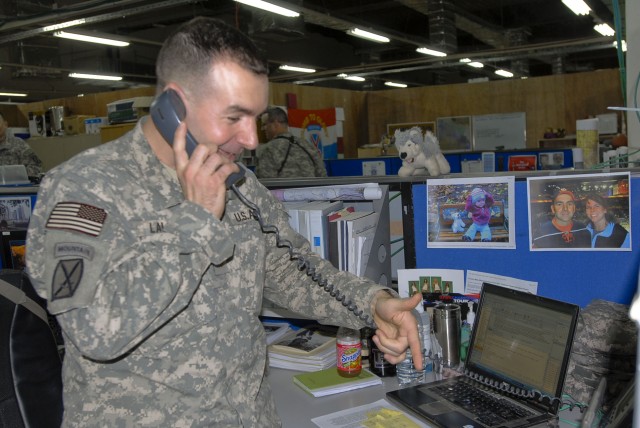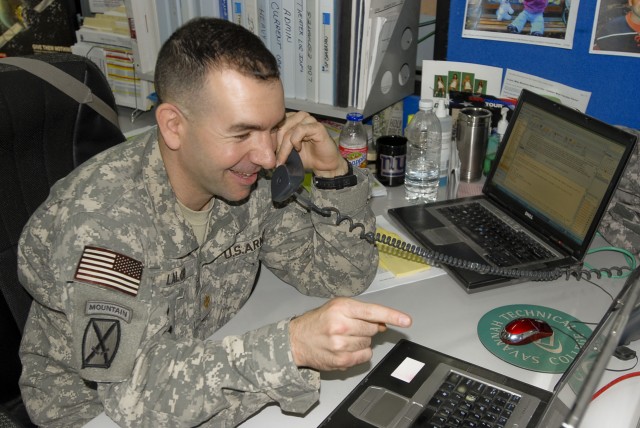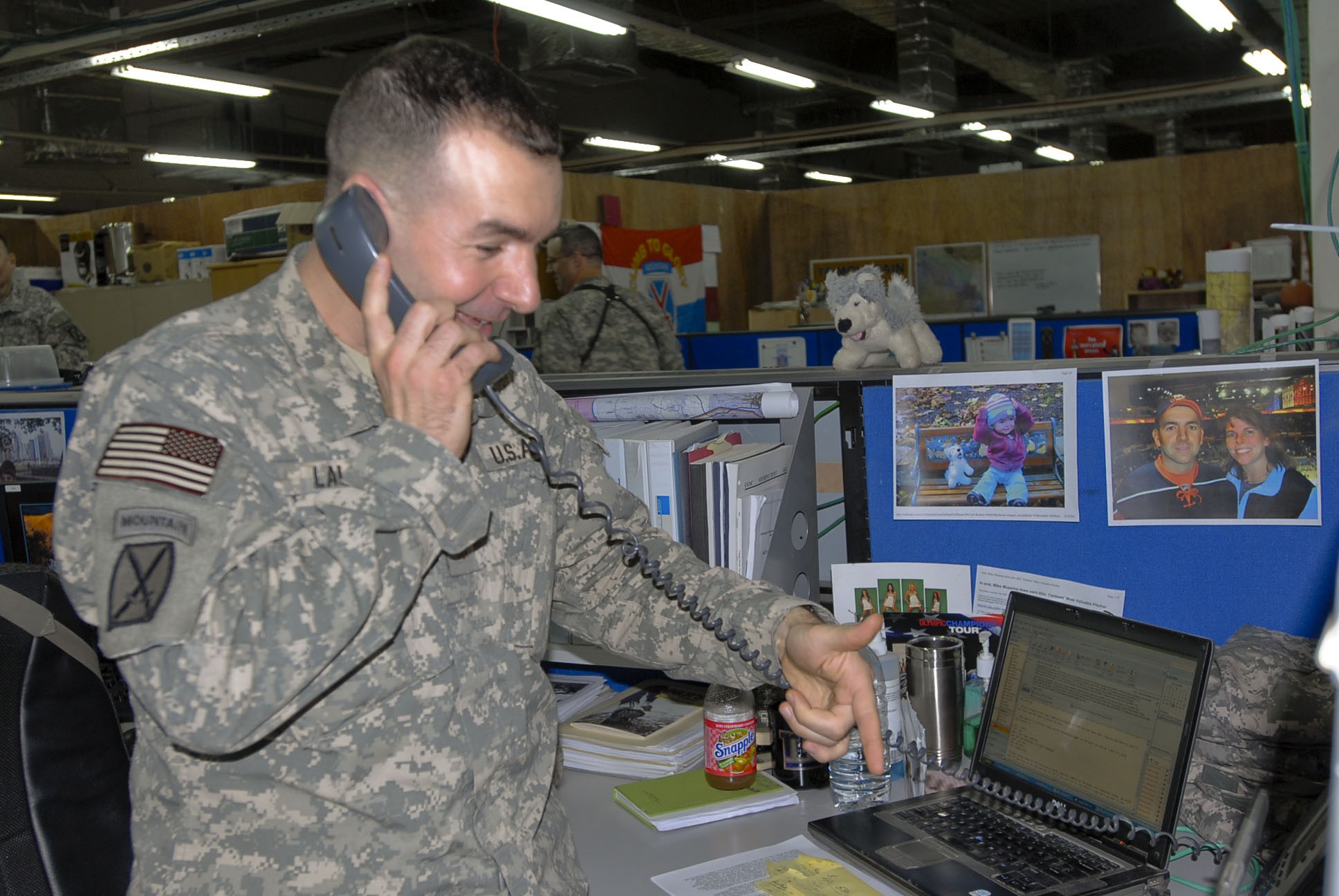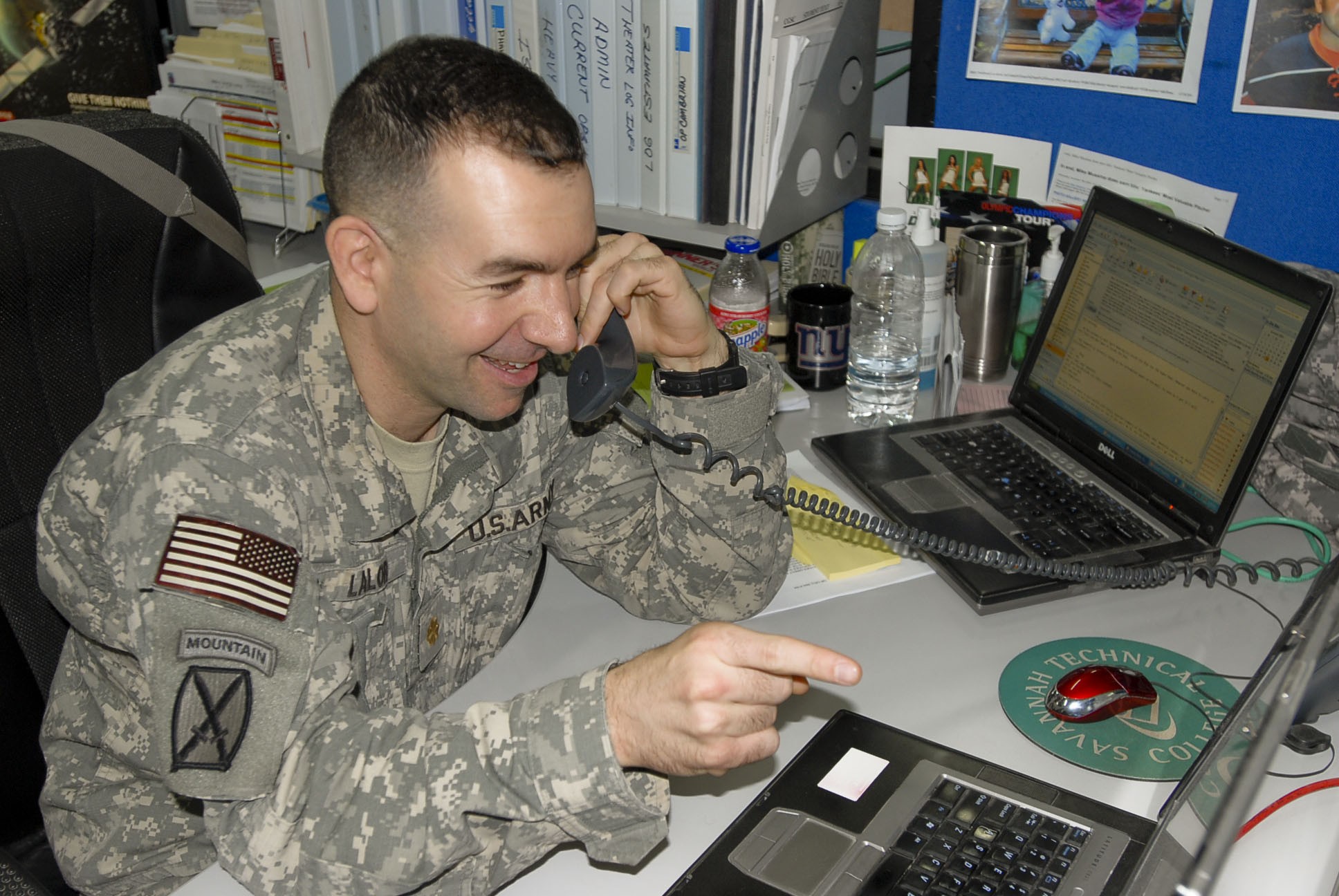CAMP VICTORY, Iraq - Inside the plans cell are many workers, all trying to pull together the various sections of Multi-National Division - Center for one master plan. One such Soldier is Maj. Michael Lalor, MND-C division logistics planner.
"My job is key because no matter what we do on the battlefield, there are logistics implications that support each and every mission," said the Goshen, N.Y., native. "On every mission we do, there is something related to transportation or certain logistics we need at a certain point on the battlefield."
Lalor brings the logistics perspective into the civilian-military operations plans shop to make sure they understand the implications throughout the operational environment. He also synchronizes with the logistics team to make sure the right assets are allocated toward the mission planned.
"There is nothing we do that isn't in some ways affected by logistics," he said.
Logistics encompasses several aspects, such as maintenance, ammunition, fueling, transportation and sustaining the force; feeding troops; attaining supplies for the job at hand and getting water to the troops, to name a few. Lalor also handles property transfers and redeployments.
Lalor attributes the success of planning each operation to a group effort. The plans cell analyzes a problem using the Military Decision Making Process. Then, the operational planning team members determine what their respective teams will need to accomplish the overall mission. These section planners will then reach back to their own sections for more support and fine-detail planning.
"We gain their input, have them work out the finer details and work the plan from there," said Lalor. "I can't do anything without them because they are the subject matter experts ... They are pretty much my backbone; they provide me all the information I need to continue to create a plan."
As the logistics planner, Lalor works closely with the logistics team as well as the civilian-military operations section.
"If I have a plan I'm working, I'll take the maneuver layout, where we think we will be conducting the operation, and I'll do my own analysis," said Lalor. "I'll get with (logistics), and I'll run through the mission analysis as I see it logistically. Then, they'll give me feedback and refine what I think. From there, if there are implications, for say transportation, they'll start coordinating for transportation assets whether it'll be with the sustainment brigade or airlift, etcetera."
With coordination completed, the plans cell can move forward with their operation and accomplish the mission to help the government and people of Iraq.
"The biggest thing we do here is enable our units in MND-C to go out and partner with the Iraqi Security Forces or work with the locals to improve governance and economics or just capacity in general," said Lalor. "I think what we do here, enabling our units to go out and do their mission, is probably the biggest way we help (Iraq)."




Social Sharing